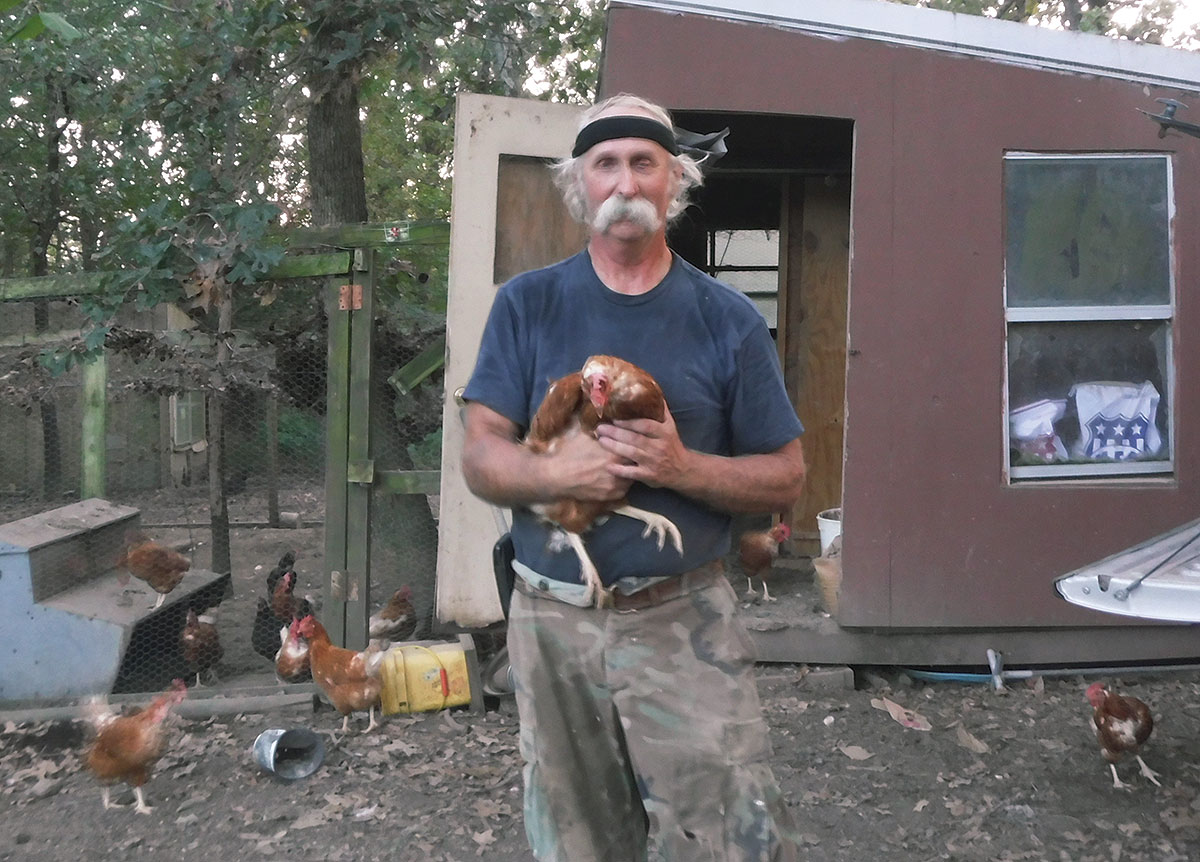
Lincoln Hough got a jump start on a lot of cattlemen his age when he bought his first three heifer calves in 7th grade. They were Herefords, and he named them after three girls he was in school with. “I started AI-ing them right off the bat,” he explained. Sara, one of them, is still today one of the most productive cows he has. “She’ll have a calf every 10 months, like clockwork,” Lincoln touted, with a smile.
Lincoln built up a small commercial herd through his high school years, all while working for Ferguson Feemster’s dairy farm. “I worked for Ferguson for 10 years. I milked, and did whatever they needed. Ferg was a great teacher. I was in the milk barn by myself the first time I milked. I learned at his farm how to do my own vet work, I learned to manage pastures. The Feemsters raise lots of alfalfa and he taught me that the healthier your forages are, the healthier your cattle will be. I learned you can maximize your property if it’s fenced and cross fenced properly,” Lincoln said. Here he also learned to be frugal and to expand your operation as you are able financially. “The most important lesson I learned is you have to manage the farm. You can’t always have the latest and greatest equipment, you have to use what you have until you can afford a bigger and better piece of machinery.”
Today Lincoln and his wife, Sarah, rent around 500 acres, and they do contract hay baling as well. “We have two herds, a commercial operation and a fledgling purebred Hereford herd,” he explained. Some of Lincoln’s Hereford cattle came from a herd started by Jerry and Vera Chandler, and also some from Lyndell Voris. “Jerry started his herd when he came back from World War II. They might not be registered, but the strong, historic Hereford bloodlines are there.” Last spring Lincoln and Sarah purchased 75 head from a neighbor in the area. At that time he began backgrounding his calves to 750 lbs. “We take the calves to another farm and put them on all the pasture they want, and give them the brome and alfalfa hay and 2-2 1/2 lbs. grain per day. Then I work with Nick Flannigan, my field rep from Joplin Regional Stockyards. He’s helped us a lot to realize net gains in my operation by the way we handle the calves, and the times we sell.”
The Houghs look for bulls that will throw strong calves. “I’ve used bulls with very low birth weights to run with my commercial heifers and they’ll throw 60 lb. calves that just looked like big cats,” Lincoln laughed. “I breed my heifers to calve around 27 to 30 months anyway; I want them big and strong and I want that first calf strong too.”
He insists his cattle milk well, a testament to his years with a dairy herd. “I don’t want my heifers to milk away to nothing. You just raise a better calf if you’ve got a stronger heifer.”
Improving and growing their commercial and registered herds are a priority each year for Lincoln and Sarah. Simmental and Balancers are also found in his commercial herd. “We keep a select few back each year. I want the tallest, longest and fastest growing heifers. And we’ll keep a few bulls to sell. We’ve sold a handful. Our bulls are a larger-framed animal, taller, longer, quicker to mature, with longevity and good feet. And, no one wants a bull you have to grain. We breed our bulls to be strong and they’re not raised on a lot of grain. We’ll give them about 2 lbs a day, maybe three, in the first 10 to 12 months. From there, they’re on their own.”
The Hough’s cows and calves are worked through a vaccination program two times a year. “This is another notion that comes from Ferguson, but animal health is one of the cheapest insurance policies on the farm,” he explained.
“The input cost may be big, but you’ll produce calves the buyers know will be good, every time.” Lincoln said this way of thinking is fighting the old-school mindset of just weaning them and sending them to the stockyards. But for him and Sarah, it works. “We’re realizing a lot more profit now.”
Hay is another big part of the Houghs operation. They bale all their own hay, and do some custom work on the side as they have time.
Outside of the farm, Lincoln and Sarah are involved in the community. Lincoln has been active with the Greene County Farm Bureau for several years, and he is the current president of the Greene County Cattlemen. Sarah works for the Urban Districts Alliance in Springfield, and Lincoln is currently vying for a new job in politics. “I’m running for the 140th District State Representative seat which has been held by Bob Dixon,” he explained. A Republican, Lincoln said he hopes to bring a conservative voice and a friend of agriculture to Jefferson City. The Republican primary is August 3rd.
“I started with Herefords, and we’ve got along well. They’re the cattle that settled the West,” he smiled. And although he’s always had a passion for public service, Lincoln’s also loved the farming life for as long as he can remember. “I’m a seventh generation Greene County native. I’m proud to be from this area, its people, its farmers. Sarah and I plan to raise our family here and I hope to be farming this land for many, many years to come.”







